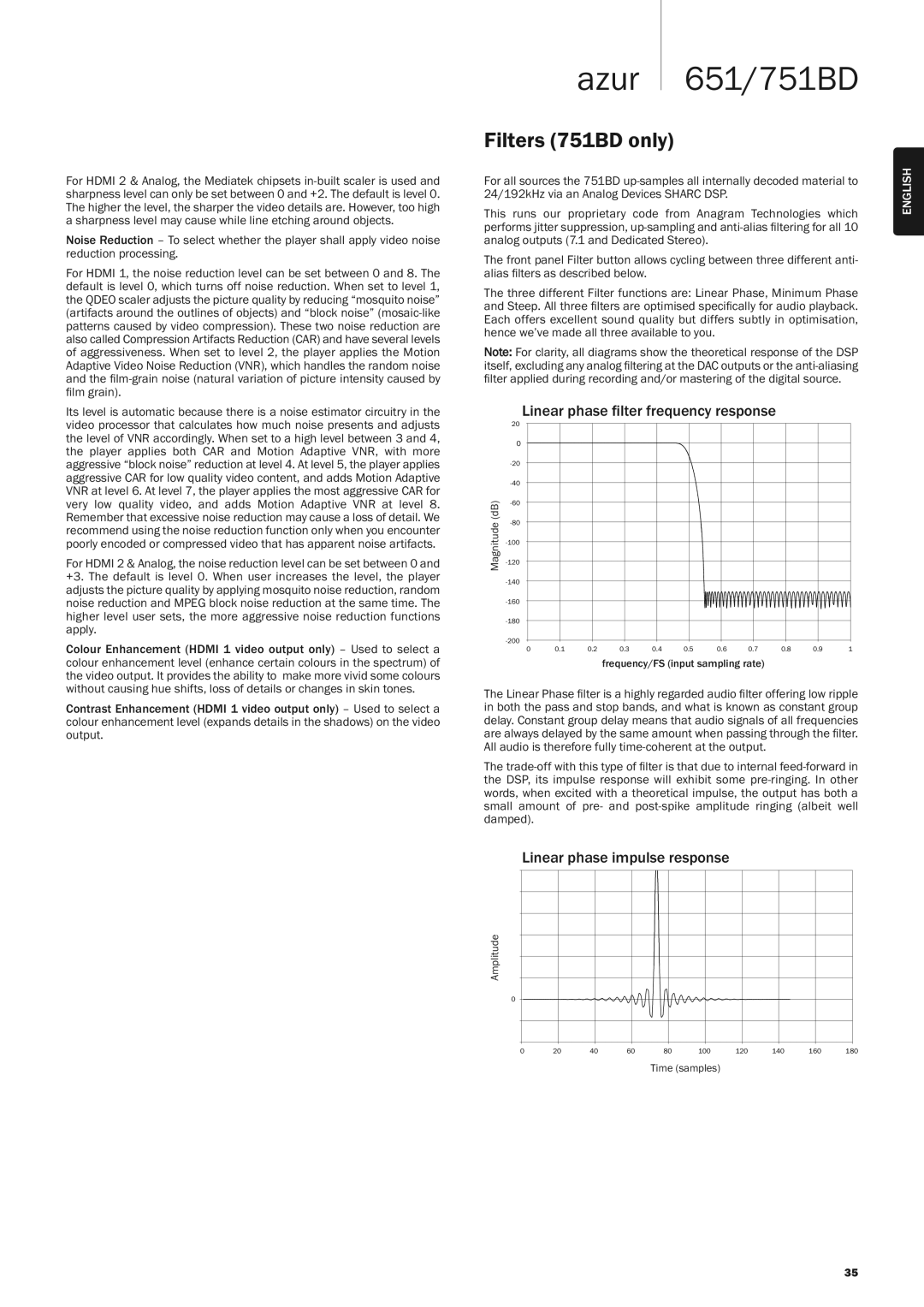751BD, 651 specifications
Cambridge Audio is renowned for producing high-quality audio equipment, and the 651BD and 751BD models are prime examples of their commitment to delivering exceptional sound and video performance. These Blu-ray players offer a comprehensive set of features and technologies designed to elevate the home entertainment experience.The Cambridge Audio 651BD is constructed with a focus on audio fidelity, providing an impressive range of audio formats, including SACD, DVD-Audio, and DTS-HD Master Audio. This model is designed for audiophiles who want rich, immersive sound to accompany their visual content. It incorporates a high-grade 24-bit/192kHz DAC, which ensures that even the most subtle nuances in music and dialogue are captured and reproduced with precision.
On the other hand, the 751BD takes performance a notch higher with the inclusion of advanced audio and video technologies. It features an enhanced Burr-Brown DAC, which is revered for its superior audio processing capabilities. The 751BD supports a wide array of video formats and resolutions up to 1080p, including various streaming formats, making it a versatile choice for modern entertainment systems. Additionally, it supports 3D Blu-ray playback, allowing viewers to experience their favorite films with stunning visual depth and clarity.
Both models are designed with a user-friendly interface, ensuring easy navigation through menus and media selections. They offer multiple connectivity options, including HDMI, USB, and Ethernet ports, which allow seamless integration with existing home theater systems and streaming services. The inclusion of onboard Wi-Fi in the 751BD further enhances its capabilities, facilitating convenient access to online streaming platforms.
The build quality of both players reflects Cambridge Audio's dedication to excellence, with robust chassis designed to minimize vibrations and interference. Aesthetically, these players have a sleek, modern design that fits well with any home entertainment setup.
In summary, the Cambridge Audio 651BD and 751BD Blu-ray players are exceptional devices that combine advanced technology, superior audio performance, and stunning video quality. With features designed for both audiophiles and casual viewers, they provide a rich and engaging entertainment experience that is hard to beat. Whether it’s high-definition films or high-quality music, these players are engineered to deliver every detail, turning any viewing into a cinematic experience.

